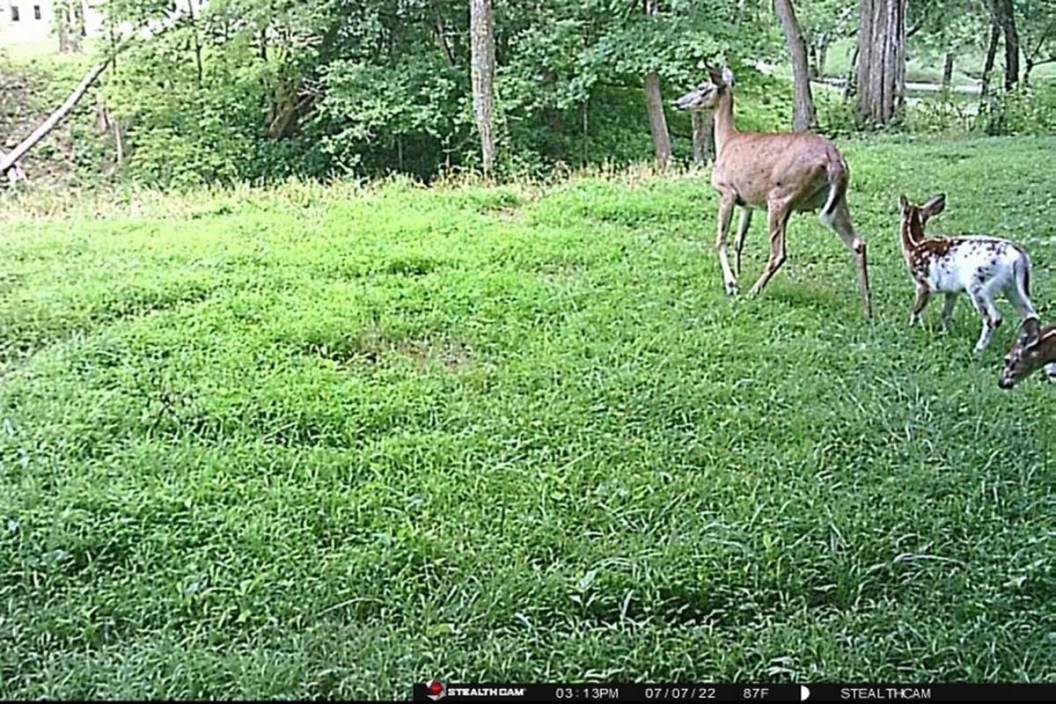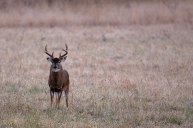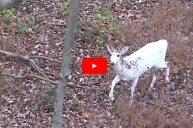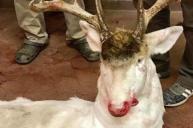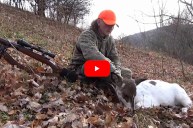It feels like every hunting season I see pictures of piebald or albino deer pop up on social media or texts from various friends. They come in the form of trail camera pictures or harvest pictures, and year after year, a feeling of extreme jealousy overcomes me. Only, I don't exactly know why.
The rarity alone is pretty incredible. In fact, recent studies have shown that less than 1% of deer carry the piebald trait. Even more incredible, albinism only occurs in roughly 1 in 30,000 deer.
Just to be able to see a piebald or albino deer would be an experience in itself. But then I got to thinking, would I even be able to harvest one if I had a chance? Would it have to be a doe? Would it be better if it were a buck? Is taking that gene out of the herd a good thing? So many questions popped into my head, and I hadn't even seen one on a trail camera yet, much less in person.
That was until a few months ago, when I was pulling SD cards on one of my farms. As soon as I got back to my house and I decided I couldn't wait any longer, I had to check them, a feeling many of you are probably familiar with. As I was scrolling through, I noticed a white blob off in the distance. I assumed a dog had gotten loose and made its way over to my farm. I scrolled to the next picture and there it was. A beautiful piebald fawn, with more white than most of the piebald deer I have seen.

Dylan Hayward
Now, obviously I couldn't harvest the deer this year. Even next year would be out of the question for me, and possibly even the year after that. But I started to think, could I even harvest this deer, whether it is a buck or a doe, when it reaches maturity? I decided to do some research, and here are some of the things I found.
What Causes Piebald and Albino Deer?
The piebald and albino gene in deer causes a lack of pigmentation in certain areas of the deers body, which as a result leads to part of the body being white, or the entire body, as in the case of albino deer.
Studies have shown that both parents need to carry the gene in order to pass it along to their offspring. And as of right now, there is no evidence that suggests the gene for piebaldism is connected to the gene for albinism.
According to the National Deer Association, Piebaldism in whitetail deer is often accompanied by deformities. These deformities can range from mild to severe, but most often are always skeletal related, such as shortened legs, crooked spines, deformed hooves as well as shortened jaws.
However, most piebald deer can live very normal lives, with little to no negative symptoms. Bigger issues arise when you dive into the potential for passing these genes along through breeding, increasing the chances of deformities amongst your deer herd.
State Regulations

Travis Smola
Upon seeing the deer on my trail cameras, I immediately checked Ohio's regulations to see if anything was mentioned about harvesting a piebald deer. The last thing I would want is to harvest a piebald deer, only to have the game warden come knocking on my door, slapping me with a big fine, and possibly even doling out a hunting suspension due to ignorance about the rules. After I checked, I learned there was no documented regulations related to piebald or albino deer hunting.
Upon doing more research, I found out (to my surprise) that harvesting an albino or piebald deer is illegal in several states. In Tennessee, for example, it is considered a Class A Misdemeanor to harvest a deer that carries these genes. States such as Illinois, Iowa, and parts of Montana also have laws protecting these deer, taking the option off the table for many hunters.
After reading up on it some more, it appears the idea of restricting harvests of albino and piebald deer is not a new thing, and in fact quite the opposite. History has shown that many Native American cultures considered these white deer to be sacred, and would under no circumstance hunt them, with fear of being cursed.
How They Affect the Herd
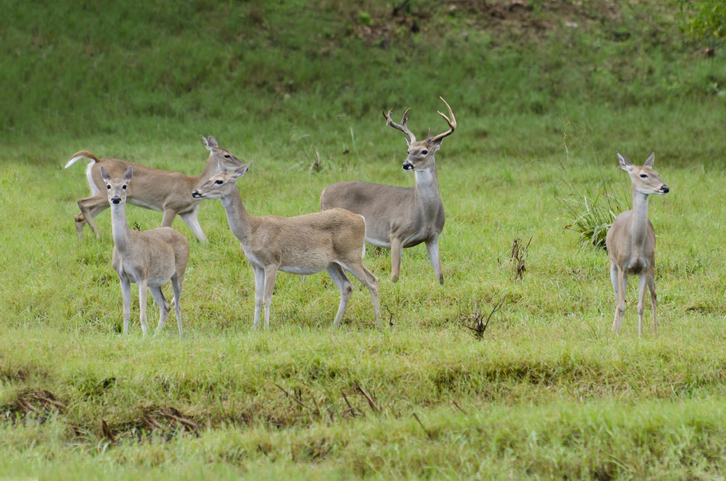
Medley of Photography/Getty
Many of the regulations protecting albino and piebald deer have been protested by sportsmen, as most hunters agree that these deer have a negative impact on the deer herd as a whole. From a completely biological sense, it would only be logical to say that these genes are not something we would want to be passed down, as there are some health risks related to albinism and piebaldism.
However, the issues aren't just physical. Studies have shown that albino and piebald deer are almost always outcasted, even as early as fawns, which leaves them very vulnerable to predators. Sometimes, even their mother keeps her distance from them. Combining that with their inability to properly camouflage themselves, especially during the night when predators are most active, means their odds of living long lives are hardly likely.
What Would You Do?

Dylan Hayward
Assuming that your state and local regulations allow you to harvest a piebald or albino deer, would you do it if you had the chance? My home state of Ohio has no harvest restriction specifically on these deer, allowing me to make a personal decision on whether or not I would shoot, assuming the opportunity presented itself.
After all my research into these deer, it's hard for me to think of a reason not to harvest one should a mature albino or piebald come into my sights. However, in what might be considered an emotional response, I thoroughly enjoyed discovering this piebald fawn pop up on my camera and seeing it still thriving in new photos each week. There is a rarity about it that makes me want to cherish its life.
After showing pictures of this deer to my neighbors, it seems like the entire town now loves talking about the deer, and they frequently call or text me asking about it. I consider myself a true wildlife conservationist and I put a lot of effort into whitetail management on my properties. From that perspective, I believe the best thing would be to harvest the deer when he or she reaches full maturity.
But still, I have mixed emotions when I think about that deer. The joy that it seems to bring my neighbors is contagious. Should I really kill it? The rarity of the genes it holds and the uniqueness of nature that it represents are extremely special. I can't help but think that if that deer walks under my stand in a few years, I would merely smile, give a symbolic nod, and let it walk.
